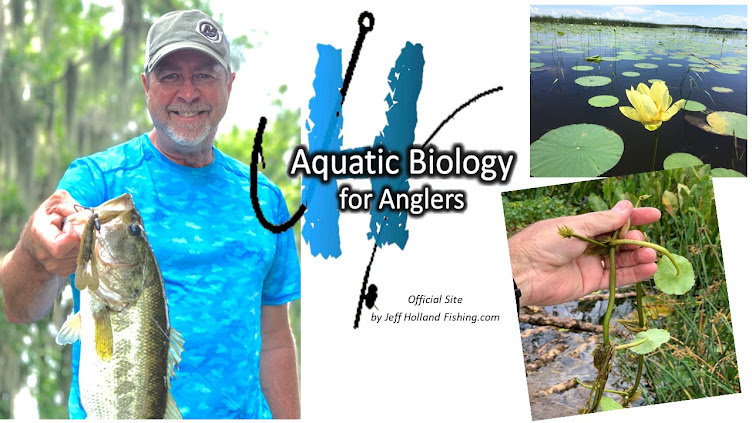 |
| 2017 Ray Scott National Championship in Nashville, TN April 3rd-9th |
While my tournament event did not go as expected, Cumberland
River's Old Hickory reservoir in Tennessee was a beautiful system to fish the
ABA National Champship.
Dense angler fishing pressure and abnormal weather conditions threw a wrench in
my fishing, eliminated anything I found during my single-day ride around, and shut down the bass bite to a slow crawl.
With all three species: largemouth, spotted, and smallmouth
bass, the possibilities for catching fish seemed endless.
Scouting
On the Tuesday I arrived water temperatures where reaching
67F degrees. My plan started with
several hours of scouting with my Lowrance Structure Scan unit. Once I got a feel for the water conditions, I
made my first fishing stop along the main river channel along a rocky bluff
wall. In water 40ft deep, the logical thing to do would be to fish a jig down the
rock outcroppings.
But I'm not logical and I surmised by the conditions that
any bass out here would be pre-spawn, feeding in anticipation of soon heading
shallow to spawn. With the predicted cold front on the way, this deeper area
should hold heat longer.
Using a topwater walking bait, I fished the bluff and caught
a good pre-spawn spotted bass that looked to be just under three pounds. So far
so good.
 |
| First spotted bass of practice on a rock bluff |
 |
| There was a large crawfish pincher sticking out of the fish's gullet. |
My next fishing stop was all the way to the back of a creek
to assess the stage of any spawners. I needed to find out if the bass were on
beds yet or if they had spawned already.
On my first pass along the shallows I eye-balled five single
bass on beds, and two paired with bigger females. No bass fry was present. The beds were extremely different than our
Florida Kissimmee Lake bass beds. Old
Hickory bass made very light colored beds and non-distinct bed on sandy
bottoms. Male bass were observed in the middle of the beds and were extremely
hard to see. These bass lacked any
mottling and were an almost silver in color.
 |
| The lighter color in the center of this sand flat was a bass on a bed |
 |
| A nice largemouth caught fishing the shallows near beds. |
Since I had scouted both extremes (shallow and deep), my
third fishing stop was mid-river to find bass closer to the river channel. This group of bass should be a mix of
prespawn/spawning fish but less subjected to the effects of the predicted cold
front. Cold temperatures often pull bass
off beds, and may even pushed spawning fish back out to the main river until
weather conditions stabilize.
It was in this mid-river area that I found the biggest
largemouth and spotted bass. In fact, one largemouth bass-bed deep inside a
fallen tree held a six pound female spawning with a three male!!
 |
| A six pound bass was seen spawning in the protection of this tree-fall. |
Severe Weather
On Wednesday afternoon the American Bass Angler's Ray Scott
National Championship registration meeting began.
 |
| Angler registration and pairing meeting in TN Civic Center |
During the event the weather front officially
hit Nashville TN. Along with rain and cold temperatures, the front also brought
ludicrous-level wind speeds. With 45 mph gusts and small craft wind advisory
throughout the night, the tournament organization was forced to cancel the
first day of the tournament. The scheduled three-day championship turned into a
two-day shootout.
I drew out as boat #29 in flight 2, so all night I wondered
how the wind and cold would affect those big spawning bass. I contained my
excitement of potentially catching that six pound spawning bass first thing in
the morning.
Day One
Day one of the tournament started at 4am with predicted winds
in the 30mph range and air temperatures in the low 40s. After a 20 minute run up lake from the Sanders
Ferry boat ramp, I could hardly feel my face or work my hands. The wind burn
and cracked skin I received is still slowing my ability to type this blog a
week later!
My first stop was a wind protected, deepwater bay just off
the main river north of the mid-lake bridge. Sunlight was low and the morning
was gorgeous. Working a rocky point in the bay I landed my first spotted bass
over the required 12 inch limit. After catching a few short spotted bass, I
moved to the back of the bay and caught my first keeper largemouth bass over 14
inches. As I was fishing, the sun was breaking the horizon on this bluebird sky
day. The warmth from the bright sunshine
felt good and would hopefully warm up the shallows that sat in the mid
50s. Surface water temperatures had
dropped over 12 degrees!
As the sun rose, I noticed the water in the bay was dirty,
and rising. My first thought was "Wholly crap, the main river was swelling
due to rain and the lack of hydro-generation”. I fished all the rocky bluffs, creeks
and bays I scouted as well as new ones with no success. Between the 12 degree
temperature drop and incoming dirty water, my bass got lock-jaw. My first day weigh-in at 3:15pm consisted of
two bass for a miserable 130th place standing out of 156 pros.
Day Two
On the second tournament day it was even colder at 4am with frost
all over my boat and
Mercury engine. Being physically worn down from the cold at this point, I
donned four layers of shirts and my BassProShop’s heavy duty rain suit.
My first fishing stop was again in the deep water bay where
I caught my two bass on day one. I found the water up half a foot higher and dirty
water from the main Cumberland river all the way back in my bay. After fishing
for 40 minutes my coangler and I never got a bite so I called an audible.
Heading back out to the deep water of the main river I found
parts of the river was clearing. Fishing the clear side along the river shoals,
my coangler caught the first keeper bass off a wood laydown. I had my first clue of the day. But after working main river wood for an hour
neither one of us got bit again. “Some clues
lead anglers in the wrong direction.”
Given the conditions, I moved to fish the deepest water in the
largest protected creeks way off the main river. My first stop was a large marina surrounded
by 20 feet of water. Large schools of shad were swimming around the marina
docks and my coangler caught his second keeper largemouth bass on a jerkbait. I
worked hard with a jerkbait, shakeyhead, worm, and sinko around every dock and only
managed to draw strikes from two short bass.
 |
| Large, deepwater marinas held the shad and a few bass. |
 |
| Fishing sinkos wacky-style earn a few bites but no keeper bass |
Things just did not go my way and I ended the day officially
skunked. First time I have been fishless in over 15 years fishing as a pro
angler. Very disappointing to me and I felt I let my family and sponsors
down. I wanted to do so much more for the
Kids in Support of Soldiers. All the yearlong effort to qualify
for the national championship and miles of travel, everything at the time seemed
worthless. The highs and low of tournament
fishing hurt, but that pain builds toughness, and the ability to shake it off
is something tournament angler know all too well.
 |
| On the 10-hour drive home I was able to review the event and shake off the pain and humility I experienced. |
Internal Dialog
On the bright side, the ten-ton gorilla is off my back! The
experience of being skunked allowed me to push through my fear of failure and
stand tall despite my poor results. Being
skunked did not cause the world to end, people didn't laugh, sponsors didn't
drop me, and no one posted ridicule on social media. Wow!
Life continued…
As I write this summary, I am concurrently preparing for the
second stop of the Bassmaster Southern Open trail on Tennessee's Lake
Chickamauga! Our Florida strain bass
were stocked there beginning in 2000 and the bigger females are now making the
local newspapers. Huge 30 and 40 pound bags of bass are winning tournaments in
the area. Lake Chickamauga is set up to be a much different fishery than Old
Hickory!
The lessons learned from Old Hickory Lake have greatly
helped me understand the bass of Tennessee. Stay tuned, I'll post my Bassmaster Southern
Open experiences and results in the next blog.
I hope this helps you catch more bass on Old Hickory Lake. Jeff
.JPG)

.JPG)































































